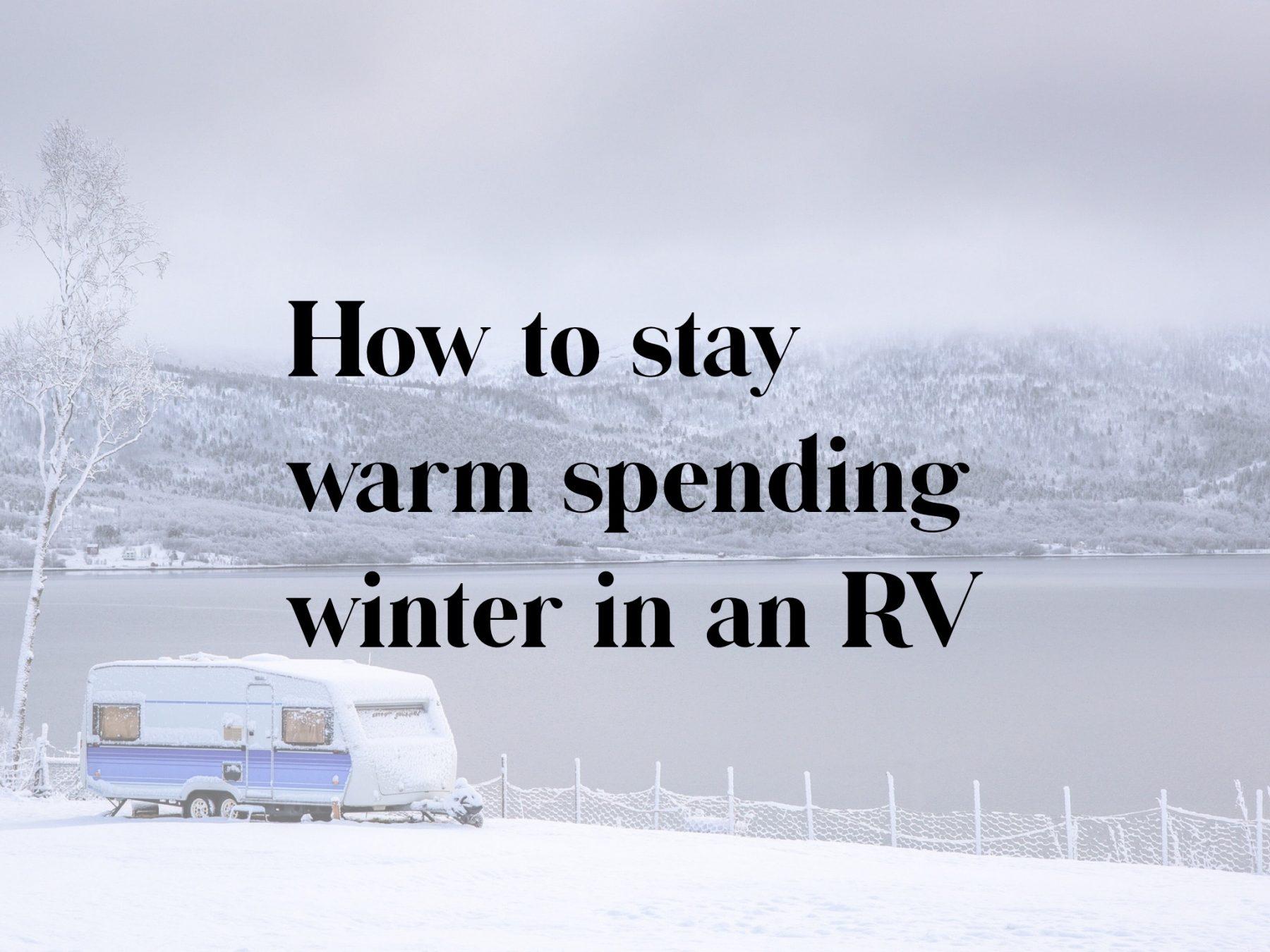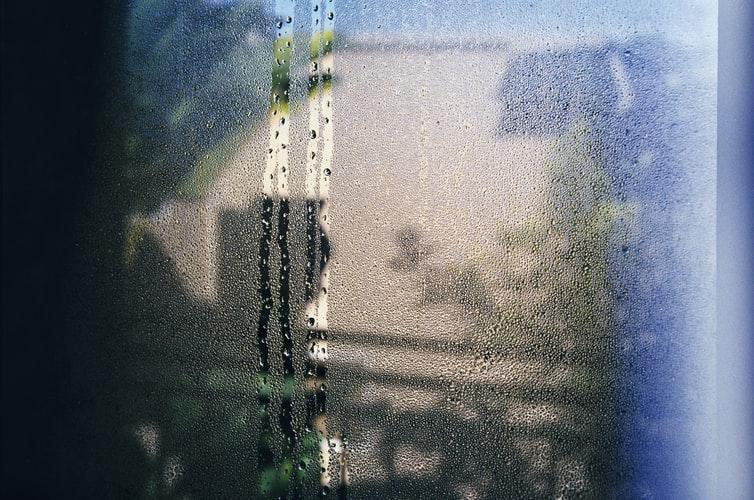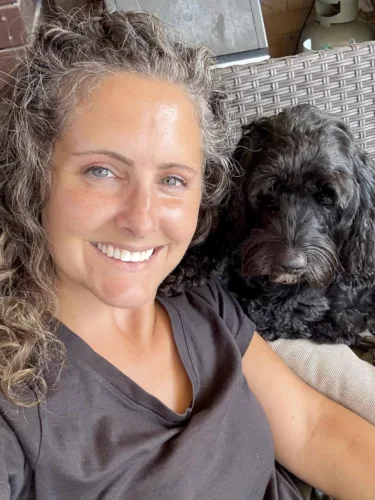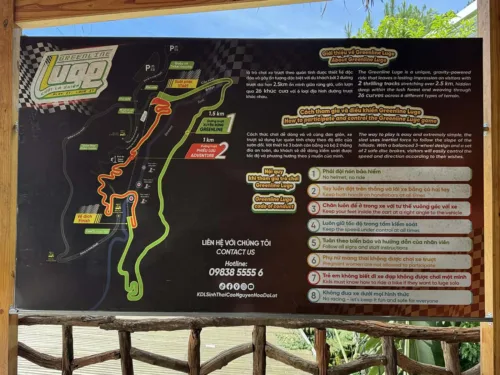Get your RV ready to live in for winter!
(This post contains affiliate links. If you take a recommendation and make a purchase, we may recieve a commission that doesn’t affect your purchase price).
Our family has been living in our RV year-round since the summer of 2018, which includes winter RV living. While most winters we head south to warm or at least more moderate temperatures in Southern California, Arizona, Florida or in Baja, Mexico, we stayed in Canada one year (December 2020), which presents a different set of challenges for winter living.
While we’re missing out on our typical trip of winter RV trips to a Florida beach, Arizona campgrounds, or California RV Parks (and dreaming of one day RVing on a hot beach in the Baja in Mexico), in 2020 we we’re getting to experience something new: winter RV living.
If you haven’t spent time in an RV, I wouldn’t recommend jumping in for winter.
To be fair, we are in Canada, but just a couple hours north of the Washington State border, so while it is cold, it’s mostly rainy and foggy and not experiencing arctic cold temperatures like in the north or high precipitation like around the Great Lakes.
I wouldn’t recommend starting your RV life in winter in Canada. I’d pick a more temperate climate and check out these 21 RV hacks to get situated before more courageous adventures.
You’re going to spend winter in an RV?
We’re going to give it a try. At least, that’s what we told our family when they asked, and while it’s not quite the same as the January we spent RV camping at national parks, state parks, and campgrounds (or boondocking) in Texas, it hasn’t been a terrible experience…
We are toying with a getaway/winter RV trip to Mexico to get out of the cold weather; that’s another story for another time.
Winterizing your RV vs. Wintering in your RV
Winterizing is what most weekenders do with their travel trailer, fifth wheel or mobile home over the winter months. They prepare it to avoid damage to the plumbing while nobody is using it over the cold winter months, stop snow from melting in, and their camper stays in one place.
Wintering is preparing your RV to live in during the whole winter season – basically, winter camping, whether stationary or taking a trip now and then. Our RV is our home, not a weekend getaway that we can choose to avoid in cold winter weather, so here are ways we’ve found to stay warm as we spend winter in our RV.
If you’re getting ready to spend winter in your RV, here’s what to consider:
Where will you be winter RV camping?
- Will you be winter RV camping at a campground, a national park, or a state park?
- What is typical cold weather for that park or area?
- How much snow do you anticipate having on your trip?
- What temperatures do you need to expect to weather, and what breaks will you get from those temperatures?
If you’re planning on winter RVing only to stay in a moderate climate where you may be below-freezing now and then at night but mostly above freezing during the day, then wintering in your RV will look different than if you’re expecting to be in sub-zero temperatures for days or weeks at a time.
There are many variables to winter RV living, but when it comes down to it, you’ve got cold air, poorly built RV windows, condensation from the warm air inside, and less time outside means more time in an RV.
Winter RV Living Tips for only dipping below freezing every few nights:
- Make sure to check the weather report daily, and be prepared for unexpected or sudden dips. Don’t take chances that the report is accurate. If the weather says it may go below 40F (5C) then assume that it could dip to freezing or might snow.
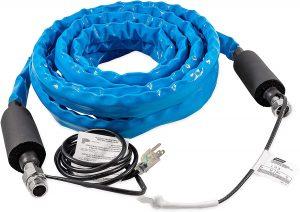
- Play each day by ear. When possible, leave your heated water hose connected, unless the distance from your faucet to the RV is longer than your hose and you need to make an uninsulated connection.
- Fill your fresh water tank regularly, and disconnect and blow out your heated hose if the temperature could drop below freezing for an extended amount of time.
- Let your water heater run through the night on nights when you may have freezing winter temperatures. Since your water heater is on the outside wall of your rig and contains a large amount of water without much room for expansion, leaving it running will maintain its heat.
-
Some RVers swear by leaving their bathroom faucet dripping through the night to keep water running through their system. Our experience with this was that the water spigot coming out of the ground at the RV park froze, so it didn’t matter that we had our faucet on – the water didn’t continue to run.
- Use a sewer hose support to ensure your hose is angled toward the drain, and there isn’t sitting water in your hose. Also, getting your hose off the ground means it’s less likely to freeze from being in contact with the cold ground, or be covered in snow when you’re ready for your next trip. Yo ucan also use heat tape to keep your sewer hose above freezing temperatures, but to be sure, just put your RV sewer hose away when you’re not emptying your tanks.
Tips If you’re going to be in your RV in extended freezing temperatures:
- Close your grey tank drain and empty your sewer hose when you’re not emptying your tanks. Sitting water in your hose may cause it to crack, and you might not realize there’s a crack until you drain the tanks next. (guilty).
- Ask people where you’re staying if they regularly experience power outages through the winter. Have a heat source that’s not dependent on electricity, whether that’s extra RV batteries connected to your rig to run your propane furnace or a portable propane heater. Of course, if you have power, run electric space heaters since that power isn’t consumable like propane.
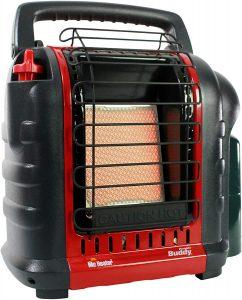
- Make sure you regularly check and fill your water tank. It might be a pain to go out and fill your tank rather than have a hose connected, but it will be more of a pain if your heated hose or campground water freezes and you cannot get water to your RV.
- Use RV skirting. This traps heat under your RV, so it takes less effort to heat your rig and keep your under-carriage tanks above freezing temperatures. We didn’t use RV winter skirting. Amazon has many options, but we weren’t stationary so the effort to set it up, take it down, and transport it every two weeks wasn’t worth it for us.
- Check your propane often to ensure you won’t wake up cold. Know the closest place to fill up propane in your area if you run out and need to make an emergency trip.
It may seem like a small detail, but getting an oscillating space heater seemed to make a difference for us to create even heat throughout our trailer. Be sure to get one with a tip over safe guard so it turns off if it’s not upright – perfect if you have children or pets in your RV
Will you be traveling or stationary in RV park through the winter?
Suppose you’re RV camping at different campgrounds through the winter. In that case, options like skirting will be more difficult, or at least more work, since you can’t travel with the skiting attached.
In exchange, you can save yourself the step of hooking up your heated water hose by simply filling your fresh water tank as your standard process when you arrive at a new location.
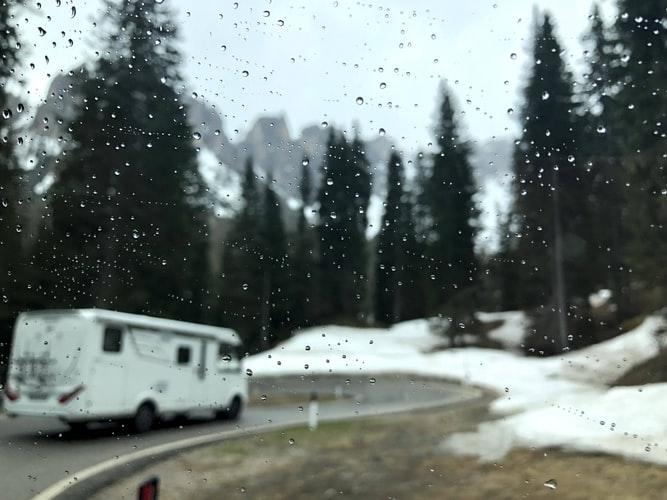
RV driving in winter
If you’ll be stationary, choose a campsite where you’ll get as much sun as possible to give your rig the best opportunity to get some natural warmth from the sun.
Our RV has windows down the driver’s side: Our large master bedroom window, slide windows, dinette windows, and two bedroom windows in our bunkhouse. Our RV’s passenger side has a small kitchen window and a small bedroom window in the living space of the bunkhouse.
Since we’re trying to enjoy as much sunlight and warmth in the RV as possible, we’ll look for a site where the driver’s side of the RV is facing the sun; then we leave all of the shades up when we go to bed so we get plenty of morning sun in the windows (ok, the bedroom shade stays closed so there’s a chance I can sleep in, but having three boys in a 30-foot travel trailer doesn’t make it that easy…).
How to Protect your RV Plumbing while you winter camp:
How cold does it have to be for RV pipes to freeze?

Keep yourself as warm as you like, then keep your RV above freezing. If you’re warm enough, it won’t really matter if your RV is comfortable room temperature or not.
I wish I could help answer this, but I honestly don’t know and frankly don’t want to find out. If I allow the water pump and plumbing to get cold enough to freeze, it will be too cold for us to live in. We keep our trailer around 70F during the day, between our electric heater, using the stove for baking, and our onboard propane furnace.
If you’re talking about winterizing your RV (because you’re not going to live in it), then fill water tanks and the plumbing with RV antifreeze, but here we’re talking about winter camping or spending winter in your RV.
Plumbing / Water on the outside of your RV:
- Make sure you have a heated water hose connected from your campground water to your RV. The heated hose must run the entire distance. Any connections or additional hoses needed to go the rest of the length from your water source to your RV create a point where your hose could freeze. Frozen water in your hose may not only cause your hose to burst but may damage your internal plumbing from the pressure.
- If you are anticipating prolonged extreme cold weather, it’s best to connect your hose to fill your fresh tank, then disconnect your hose, blow it out and store it.
- Use a sewer hose support to keep your sewer hose from touching the ground and freezing because of contact with the ground. An angled sewer hose support will help the liquids to run towards the drain rather than pool and cause a freezing point in the hose, which may crack.
- For extended winter living, bring in your hoses when not in use – better to be safe than sorry.
Plumbing on the inside of your RV:
-
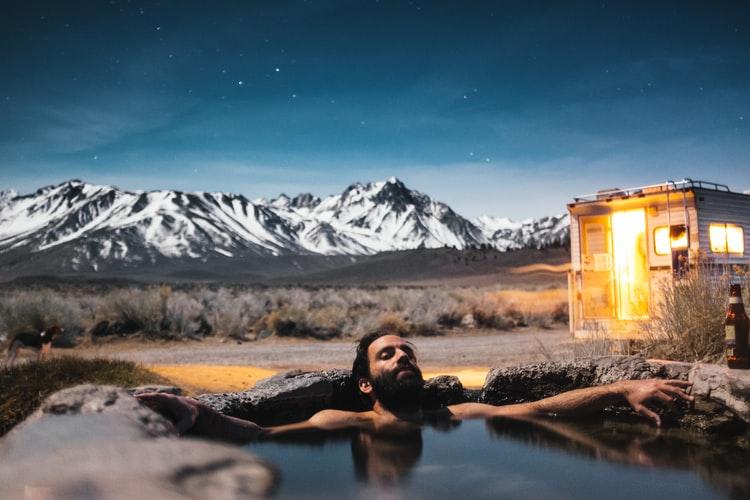
Find ways to stay warm while RVing in the winter.
If it will be cold enough to go below freezing at night, leave your water heater turned on. Some RVers habitually turn it off when not in use to save energy, but since the tank is on an outside wall of your RV, and the water in your tank won’t have room to expand, the heat from it running will keep it above freezing.
- Open your lower cupboards in your camper to allow the internal temperature to reach your pipes and drains under your sinks.
- Even if you’re running space heaters, it’s best to keep your propane furnace turned on in case your heater can’t keep up, or your electricity goes out. Our electric heater is set to heat up to 60F at night, and our furnace still kicks on when set to 50F now and then since the space heater might be on full, but that might not be enough.
How to keep your RV warm during the winter
The upside to keeping an RV warm in the cold winter is that it’s a small space, so it doesn’t take much effort to heat up.
However, our RV is also not insulated like a house or a building (especially certain parts of our trailer, like the 12-foot slide-out or the single-pane RV windows).
We focus less on keeping our RV warm around the clock and in cold winter winds, focus more on keeping ourselves warm. We have to keep our RV above freezing temperatures to protect our plumbing and appliances from freezing, but at night when the temperature really goes down, we focus less on keeping our trailer at 70F and focus more on keeping ourselves comfortable in cold weather.
Tips for Keeping your RV Warm:
-
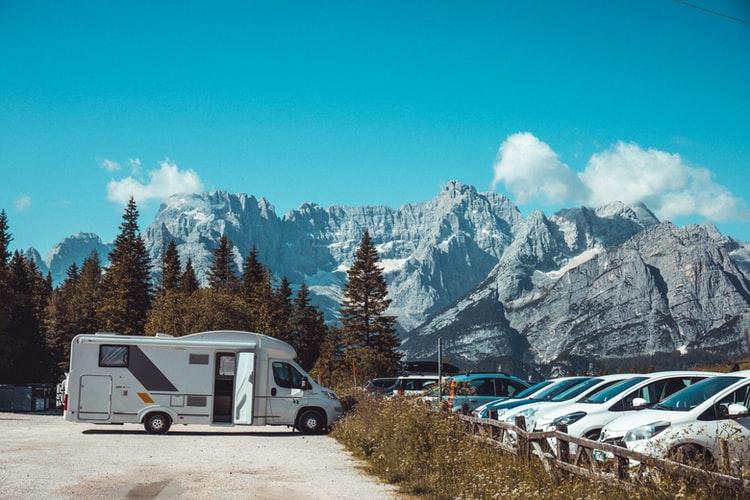
Enjoying RVing in the winter
Open the shades when the sun is out, and the weather is nice. Let that sunlight and heat in! Pick campsites that allow your windows to face the sun when possible.
- Save energy when you go out by turning your heater or furnace down, but don’t turn them off. It will take more energy to warm your RV up from getting too cold than the energy it takes to turn it down a few degrees and warm it up a few when you arrive home.
- If you’re stationary, purchase skirting for your RV to protect the heat on the underside of your RV from escaping.
- Cook in your RV as much as possible. Instead of firing up the grill and letting your propane heat escape outside, cook inside, where you’ll feel the benefit of that heat. Take a few extra minutes to warm up leftovers in the oven instead of the microwave since once you sit down to eat, you can turn the oven off but let the heat from inside out into your space. For the same reason, instead of microwaving a mug of water to make tea, turn on a burner and boil water on the stovetop.
Tips for Keep Yourself Warm while living in your RV in the winter:
-

Stay warm and make a habit of curling up under your blankets to keep warm in your RV in the winter
Wear layers. It’s easier to put on a sweater, socks, and slippers than to keep your camper around 76F inside all winter long constantly.
- We’ve found that keeping our feet from getting cold is the best way to feel warm. Microwavable bean bags are our go-to almost every night, and we put them on our feet, and the rest of our body feels cozy. (We’ll even warm them up and take them in the car while we’re waiting for our car to warm up). Keeping our feet warm allows us to keep the trailer at 68F and feel comfortable.
- Enjoy the sun in nice weather. When the sun comes out, we all go outside and spend some time walking, playing in the snow, or finding a place to sit in the sun. It may still be cold out, but that sun on our faces still feels excellent, boosts vitamin D, and adds some extra warmth.
- Keep the door closed. This is going to be a challenge for many families, and it is for ours also, but the door is the most significant heat escape. Limit the number of times you open the door and how long it stays open.
- A quick 5-minute hot shower before bed will go a long way to keep you from getting cold.
- Staying warm is easier than getting warm later. Don’t wait until you feel cold to put on an extra layer or grab a warm drink. While you’re warm, use these tips to stay warm.
How to deal with condensation in the camper while winter camping
In our RV during the winter, the first few weeks, we noticed extra condensation inside our RV on the walls and windows since the temperature outside is cold and on the inside, we have five bodies and our appliances creating heat.
Friends recommended cracking a window open and leaving our ceiling vent open to create airflow so the condensation can’t build up. That worked at reducing condensation, but it also meant that all of our heat was escaping both out of the window and the roof vent with the fan running.
Instead, we bought a dehumidifier – one that was for up to 500sq ft. While our trailer is nowhere near 500 sq ft, we didn’t want one that was undersized and not going to help with extra condensation as we needed.
The dehumidifier takes plenty of the excess moisture back out of the air – I empty it about once a day – and allows us to keep all of our windows and vents closed so that heat isn’t escaping.
(As a bonus, we’ve also used the dehumidifier in the summer heat to help our air conditioning keep up).
How do you deal with being crammed in an RV for the winter?
This is the most common question we get from our non-rv’ing friends, and while the answer isn’t perfect, we spend as much time as we can outside going for walks or hikes and enjoying cold-weather activities, and we try and be understanding when we’re all inside together.
I try and do my work at night when the kids are in bed, or if Celine takes them around the city or to play in the snow, I work while they’re out. It’s simply the balance of RV living, whether we RV in the winter or not.
Sometimes, I’ll grab my bean bag and warm it up to make phone calls to clients in our car in quiet, and sometimes, I just take the approach that “If you can’t beat them, join them” and end up taking a break from work for a quick round of quirkle, skip-bo, or decide I can use a walk.
If you’ve got kids, here are our boys favorite card games to play in our RV
Spend Time Out Of The RV In The Winter
We went to a hotel with a hot tub for one of our boys’ birthdays and enjoy spending the evening at a movie, wandering the mall, checking out the library, or going out to dinner with friends. Keep the RV above freezing while you’re out (we would set the furnace thermostat to 50F and turn off the electric space heaters), but it’s fine to go somewhere to warm up for a bit.
Some products that friends have used for Cold Weather RVing
While we don’t have experience with these products, they might be worth looking into – depending on your style of RV winter living.
- Propane Heater (Available on Amazon)
- Thermal Curtains (Available on Amazon)
- RV Heat Pump (Available on Amazon)
- Foam Insulation boards (Available on Amazon)
If you’re RVing in winter, then you might also be planning to RV in the heat of the summer. Here are 17 tips to keep your RV cool in summer heat.

